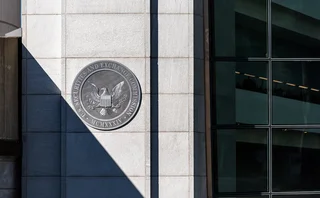
FSA announces final stage of internal operational reform
The UK regulator has revealed its new internal integrated operating infrastructure
The regulator says the new integrated operating structure is designed with an increased focus on international regulatory co-ordination, macro-prudential supervision of systemic risks and furthering consumer financial education.
"These changes will provide greater clarity, both internally and externally, as to the way we work and, in particular, reinforce our role as micro-prudential supervisor based on a model of integrated risk analysis and integrated supervision," said FSA chief executive Hector Sants.
"I believe the actions we have taken since the crisis began have shown the effectiveness of this model. This reorganisation will ensure our changing working practices and the way we make our judgements are successfully institutionalised," he said.
The reforms are direct consequences of the financial crisis, specifically the lessons learned from the Northern Rock debacle, which ended in the bank's nationalisation in February 2008, and the Turner Review in March this year.
The FSA says its reform will have six restructuring benefits: integrating retail and wholesale supervision into one unit; merging risk identification and management with policy formation under one roof; expanding its financial stability team into a new division; creating an internationally focused division; merging enforcement and financial crime into one division; and splitting its financial capability unit from the retail division, to form two standalone divisions.
"The new structure will underpin the radical changes we have made to our supervisory processes through the Supervisory Enhancement Programme (SEP)," said Sants. "SEP was designed to deliver a significant increase in our supervisory resource and changes to the way we work, in particular for 'high impact' or systemically important firms. The programme is on track and will be completed by the end of this year."
Sants says the internal reforms began two years ago in July 2007, when he took on his current role, and will take effect from October 1.
Only users who have a paid subscription or are part of a corporate subscription are able to print or copy content.
To access these options, along with all other subscription benefits, please contact info@risk.net or view our subscription options here: http://subscriptions.risk.net/subscribe
You are currently unable to print this content. Please contact info@risk.net to find out more.
You are currently unable to copy this content. Please contact info@risk.net to find out more.
Copyright Infopro Digital Limited. All rights reserved.
As outlined in our terms and conditions, https://www.infopro-digital.com/terms-and-conditions/subscriptions/ (point 2.4), printing is limited to a single copy.
If you would like to purchase additional rights please email info@risk.net
Copyright Infopro Digital Limited. All rights reserved.
You may share this content using our article tools. As outlined in our terms and conditions, https://www.infopro-digital.com/terms-and-conditions/subscriptions/ (clause 2.4), an Authorised User may only make one copy of the materials for their own personal use. You must also comply with the restrictions in clause 2.5.
If you would like to purchase additional rights please email info@risk.net
More on Risk management
SEC leadership change puts Treasuries mandate under scrutiny
FICC clearing models approved, but critics think delay could revive prospects of done-away trading
Markets Technology Awards 2025: Untangling the knots
Vendors jockeying for position in this year’s MTAs, as banks and regulators take aim at counterparty blind spots
Risk Awards 2025: The winners
UBS claims top derivatives prize, lifetime award for Don Wilson, JP Morgan wins rates and credit
An AI-first approach to model risk management
Firms must define their AI risk appetite before trying to manage or model it, says Christophe Rougeaux
BofA sets its sights on US synthetic risk transfer market
New trading initiative has already notched at least three transactions
Op risk data: At Trafigura, a $1 billion miss in Mongolia
Also: Insurance cartels, Santander settlement and TSB’s “woeful” customer treatment. Data by ORX News
Cyber risk can be modelled like credit risk, says Richmond Fed
US supervisors may begin to use historical datasets to assess risk at banks and system-wide
The changing shape of risk
S&P Global Market Intelligence’s head of credit and risk solutions reveals how firms are adjusting their strategies and capabilities to embrace a more holistic view of risk







